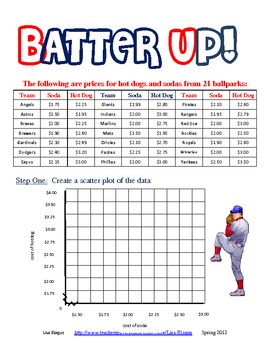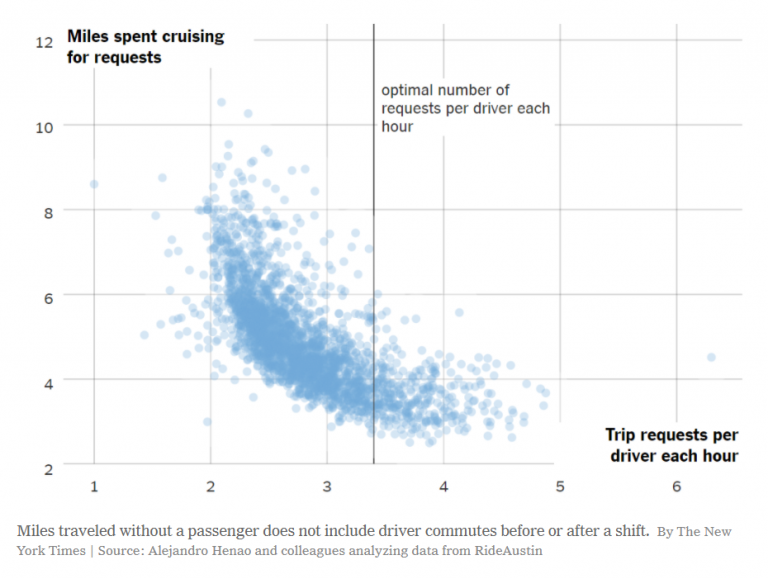

- #Scatter plot with trend line on word how to
- #Scatter plot with trend line on word pro
- #Scatter plot with trend line on word series
Then add this column to your visualization's Details well.In many studies, we measure more than one variable for each individual. To create a new field, use the Power BI Desktop Query Editor to add an Index Column to your dataset. If you don't have that in your data, create a field that concatenates your X and Y values together into something unique per point: The field must be unique for each point you want to plot.
#Scatter plot with trend line on word how to
To create a dot plot chart, replace the numerical X Axis field with a categorical field.įrom the X Axis pane, remove Sales per sq ft and replace it with District > District Manager.Ĭonsiderations and troubleshooting Your scatter chart has only one data pointĭoes your scatter chart have only one data point that aggregates all the values on the x- and y-axes? Or maybe it aggregates all the values along a single horizontal or vertical line?Īdd a field to the Details well to tell Power BI how to group the values. We can see from the shading that Hosiery (the blue square in the pink shaded area) is the only category that favors gross margin rather than its sales per store square footage.Ĭontinue exploring the Analytics pane to discover interesting insights in your data. From the Analytics pane, add Symmetry shading. Change the Y Axis field to Gross Margin Last Year %ī. You can quickly identify which axis measure a data point favors, especially when you have a different axis range for your x and y axis.Ī. When you activate symmetry shading in the Analytics pane, Power BI shows you the background of your scatter chart symmetrically based on your current axis upper and lower boundaries.
#Scatter plot with trend line on word series
Instead, switch the Series to Total sales variance %.Īdd symmetry shading to show which points have a higher value of the x-axis measure compared to the y-axis measure, and vice-versa. This line isn't helpful since we can see that there are 10 data points and know that the median will be created with five data points on each side. By default, Power BI adds a median line for Sales per sq ft. To add additional information to your visualization.Īdd a median line. Using a different marker shape for each line makes it easier for report consumers to differentiate lines (or areas) from each other. To select the marker shape, expand Markers under Visual, choose Shape, and select a shape.Ĭhange the marker shape to a diamond, triangle, or square. To improve accessibility, consider adding marker shapes to each line. You want to confirm that the performance of the chart matches your users' expectations.Ĭontinue formatting the visualization colors, labels, titles, background, and more. If you choose to publish reports with limits at the higher end of the scale, make sure to test out your reports across the web and mobile as well. More data points can mean a longer loading time. As you get into the higher numbers, we suggest testing first to ensure good performance. You can set the max data volume to any number up to 10,000.

To set the number of data points to include in your bubble chart, in the Format visual section of the Visualizations pane, select General, and adjust the Number of data points under Advanced options. The size of the bubble reflects the value of This Year Sales.

The data points expand to volumes proportionate with the sales value. Create a bubble chartįrom the Fields pane, drag Sales > This Year Sales > Value to the Size well. The data point colors represent districts: Power BI displays a scatter chart that plots Total Sales Variance % along the Y-Axis, and plots Sales Per Square Feet along the X-Axis. To convert the cluster column chart to a scatter chart. Start on a blank report page and from the Fields pane, select these fields:
#Scatter plot with trend line on word pro
Sharing your report with a Power BI colleague requires that you both have individual Power BI Pro licenses or that the report is saved in Premium capacity. To display worksheet data that includes pairs or grouped sets of values. To turn the horizontal axis into a logarithmic scale. To use instead of a line chart when you want to change the scale of the horizontal axis. To plot two groups of numbers as one series of x and y coordinates. To show relationships between two numerical values. A bubble chart replaces data points with bubbles, with the bubble size representing a third data dimension. When to use a scatter chart, bubble chart, or a dot plot chart Scatter and bubble chartsĪ scatter chart shows the relationship between two numerical values. You can set the number of data points, up to a maximum of 10,000. It depends on the data the chart represents. Power BI may distribute these data points evenly or unevenly across the horizontal axis. The chart displays points at the intersection of an x and y numerical value, combining these values into single data points. A scatter chart always has two value axes to show: one set of numerical data along a horizontal axis and another set of numerical values along a vertical axis.


 0 kommentar(er)
0 kommentar(er)
